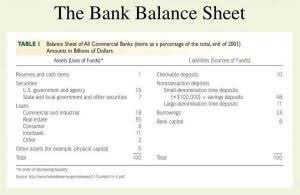
Business owners who earn a net income of less than $400 can skip paying the self-employment tax, but that’s the only tax that small business owners can avoid. Corporations are legal business structures that give companies many of the rights commonly enjoyed by individuals. In this case, the business pays taxes as an entity; the owner does not report the business’ income on their personal taxes.
- If you don’t have a bank account, go to IRS.gov/DirectDeposit for more information on where to find a bank or credit union that can open an account online.
- In the end, non-tax factors play a major role in answering this question.
- You are also a sole proprietor for income tax purposes if you are an individual and the sole member of a domestic LLC unless you elect to have the LLC treated as a corporation.
- This type of business structure passes through tax liabilities to the personal returns of the owner, who reports income and losses on the return and pays a personal income tax rate.
But it’s still essential to file your taxes, even if you’re sustaining losses, in order to take advantage of deductions and avoid legal issues down the line. The corporate tax rate is now 21%, down from 37%, thanks to the Tax Cuts and Job Act signed in December 2017. This rate affects larger businesses and those considered corporations for tax purposes.
The Best Corporate Credit Cards For Businesses
An excise tax is a tax on specific goods and services, such as various types of fuels, air transportation, certain vaccines, sport fishing gear, and even indoor tanning services. Sole proprietors, partnerships, and C or S corporations are all subject to employment taxes if they have employees. Tax preparation for business taxes can vary depending on the IRS forms required. According to the National Society of Accountants, business tax preparation can vary from $174 for Form 1040 Schedule C to $778 for Form 1120S for S-corps.
- Dispositions of business property and depreciable property.
- This illustration of the gross profit section of the income statement of a retail business shows how gross profit is figured.
- One of the issues small business owners must contend with is staying current with their various obligations for federal, state, and local taxes.
- For example, Florida is one of the best states for small business owners because it has no individual income tax.
- Report gains and losses from the following dispositions on the forms indicated.
This results in a gross profit of $100,000 ($300,000 − $200,000). To test the accuracy of this year’s results, you divide gross profit ($100,000) by net receipts ($300,000). The resulting 331/3% confirms your markup percentage of 331/3%. Figure your business income on the basis of a tax year and according to your regular method of accounting (see chapter 2). If the sale of a product is an income-producing factor in your business, you usually have to use inventories to clearly show your income. Dealers in real estate are not allowed to use inventories.
What’s the Tax Rate for C Corporations?
Use your financial documents and other records to identify your revenues and expenses. Then, it’s time to tally up the deductions applicable to your business to lower your taxable income. There are specific requirements a taxpayer must meet to claim this deduction. An accountant or tax professional how much do small businesses pay in taxes can help you determine if you qualify. You can also check out the IRS’ many resources surrounding the qualified business income tax deduction. The internet has made it easier than ever to e-file your taxes, access tax forms, and resources, and even connect with tax professionals.
Like most self-employed individuals, members of an LLC must make quarterly estimated tax payments four times per year. „The question is not what percentage of income taxes is someone paying, but what is their relative contribution to the finances of Canada as a whole,“ she said. Individuals, including sole proprietors, partners, and S corporation shareholders, generally use Form 1040-ES, to figure estimated tax.
Business Income
If you are wondering why limited liability companies (LLCs) are not listed, remember that the LLC business type is not considered a tax entity by the IRS. An LLC with one owner is taxed as a sole proprietorship, with taxes calculated on Schedule C of the owner’s personal tax return. Multiple-member LLC’s are taxed as partnerships, but taxes are still passed through to the owners. Small business owners don’t have income tax and Social Security and Medicare taxes withheld, so they must pay these taxes as self-employment tax. This means you’ll have to pay the entire 15.3% tax rate—both your 7.65% employer portion and the 7.65% employee portion.
Now, here’s where things get real trippy for small businesses. Unlike personal filers, who file their taxes once a year, small-business owners have to pay estimated taxes once every quarter. The current tax rates for pass-through entities range from 10% to 37% and are based on taxable income.
